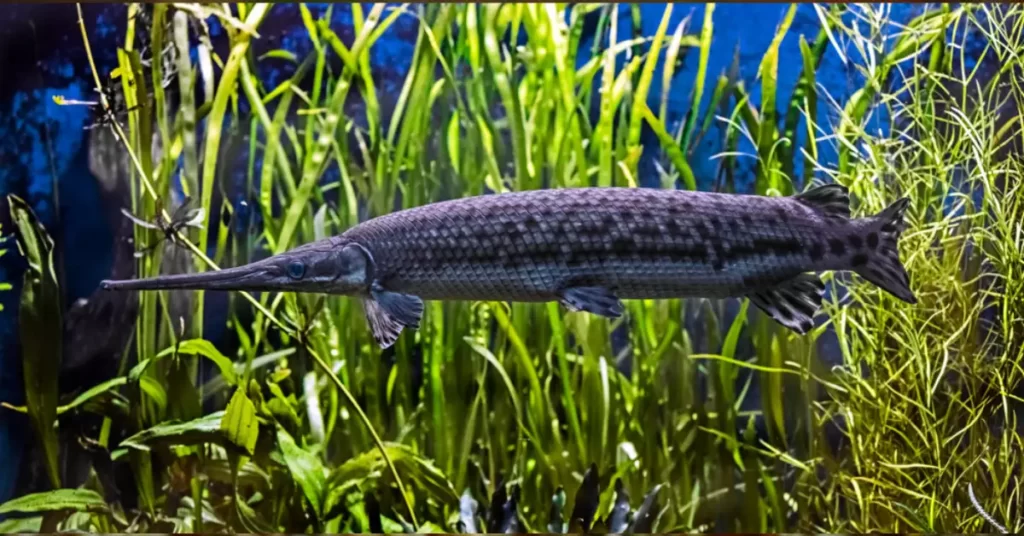Are you an adventurous foodie or simply curious about trying new types of fish? If so, you might be wondering if you can eat Longnose Gar Fish.
The good news is that you can, and this article will provide you with all the information you need to know about this fascinating fish.
From its biology and nutritional value to preparation techniques and potential health concerns, we’ve got you covered.
What is a Longnose Gar Fish?
Description and Habitat
The Longnose Gar (Lepisosteus osseus) is a large, primitive-looking fish native to North America. They are characterized by their long, slender body, elongated snout filled with sharp teeth, and thick, diamond-shaped scales.
These fish inhabit freshwater systems such as rivers, lakes, and reservoirs and can be found from southern Canada to the Gulf of Mexico.
Diet and Behavior
Longnose Gar is a predator, primarily feeding on other fish, insects, and crustaceans. They are solitary creatures, often lurking near the surface of the water to ambush their prey.
Due to their unique swim bladder, they can gulp air, allowing them to survive in oxygen-poor environments.
Nutritional Value of Longnose Gar Fish
Protein Content
Longnose Gar is an excellent source of protein, with around 18 grams per 3-ounce serving.
It is a complete protein source, meaning it provides all nine essential amino acids required for human health.
Vitamins and Minerals
In addition to protein, Longnose Gar contains essential nutrients such as vitamin B12, niacin, and selenium.
These vitamins and minerals support various bodily functions, including energy production, brain function, and immune system health.
Preparing Longnose Gar Fish for Consumption
Cleaning and Filleting
The first step in preparing Longnose Gar for consumption is cleaning and filleting the fish. It is crucial to remove the thick, armor-like scales before cooking.
Use a sharp knife to make an incision along the fish’s back and carefully remove the skin and scales. Then, fillet the fish by cutting along both sides of the backbone and removing the rib bones.
Cooking Methods
Longnose Gar can be prepared in various ways, such as grilling, baking, frying, or smoking.
Marinating the fish beforehand can help to tenderize the meat and enhance its flavor. Be mindful not to overcook the fish, as this can make it tough and dry.

Possible Health Concerns
Mercury and Other Contaminants
Like other predatory fish, Longnose Gar can accumulate mercury and other contaminants in their bodies.
However, their mercury levels are typically lower than those found in larger, more popular fish like tuna and swordfish.
To minimize exposure, consider consuming Longnose Gar in moderation and selecting smaller, younger fish.
Allergies
Fish allergies are relatively common, and Longnose Gar is no exception. If you are allergic to other types of fish, it’s best to avoid Longnose Gar, as cross-reactivity is possible. Consult with a healthcare professional if you have concerns about potential allergies.
Traditional and Cultural Significance
Native American Tribes
Longnose Gar has a long history of consumption by Native American tribes. They valued the fish not only as a food source but also for its scales, which were used for decorative purposes and as arrowheads.
Some tribes even considered the gar a spiritual symbol of protection and strength.
Other Cultures
While Longnose Gar might not be as popular as other fish species in modern American cuisine, it has been gaining attention among adventurous eaters and those looking for sustainable seafood options.
Its unique taste and texture set it apart from more common fish, making it an interesting addition to a variety of dishes.
Environmental Impact of Fishing Longnose Gar
Sustainable Fishing Practices
Longnose Gar is considered a sustainable seafood choice due to its abundance and relatively low fishing pressure.
However, it is essential to employ sustainable fishing practices, such as using proper gear and following catch limits, to ensure the species long-term survival.
Conservation Efforts
While the Longnose Gar population is currently stable, habitat loss and degradation could pose future threats. Supporting conservation efforts that protect freshwater ecosystems can help ensure the continued survival of this fascinating species.
Alternative Fish Options
If you’re hesitant to try Longnose Gar or are unable to find it in your area, other fish options can provide similar nutritional benefits and taste profiles.
For example, catfish, bass, or pike can be suitable alternatives that are also sustainable and readily available.
FAQs
Is Longnose Gar fish safe to eat?
Yes, Longnose Gar is safe to eat as long as it is properly cleaned, prepared, and cooked. Be aware of potential mercury levels and consume the fish in moderation.
What does Longnose Gar taste like?
Longnose Gar has a firm texture and a mild, slightly sweet flavor. The taste is often compared to that of other freshwater fish like catfish or bass.
Are there any specific cooking techniques recommended for Longnose Gar?
There are no specific cooking techniques required for Longnose Gar, but marinating the fish before cooking can help tenderize the meat and enhance its flavor.
Common preparation methods include grilling, baking, frying, and smoking.
Conclusion
Longnose Gar is not only an edible fish but also a nutritious and sustainable seafood option. With its unique taste and texture, it can make for a delicious and adventurous addition to your menu.
By understanding the fish’s biology, nutritional value, and potential health concerns, as well as the proper preparation techniques, you can confidently enjoy this fascinating species.
So, go ahead and give Longnose Gar a try – you might just discover a new favorite!